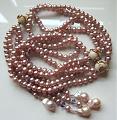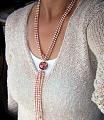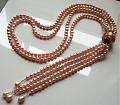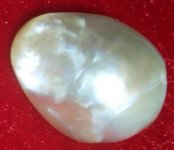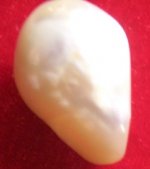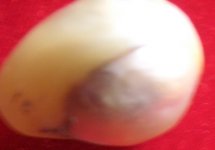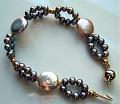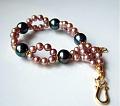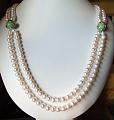I think abalone pearls are almost "digested" into being and some really look like it. That is that soup of protein, aragonite and calcium is not fully digested together throughout some pearls. Dave. Metaphor. You explain it.
Interesting observation. Actually, this is in the ballpark of something Ana Vasiliu and myself (among others) are researching from some of my submitted samples to the lab in Spain.
There is considerable evidence, aragonite crystals (spherulites) are created within the cell and pasted into place with protein as opposed to preciptated then crystallized in the extrapallial space, which is suggestive of the biotic complexity in the finished structure (ie) terraced, foliated, columnar etc.
Shells and pearls are built in well-ordered micro-layers, one component at a time per cell. It's really unlikely pearls form from aggregate solutions which catalytically harden outside of the cells, even though this does occur to some degree. The usual result of this is calcite, a dirty word in pearl circles.
Secondly, interestingly enough and to get to your specific point, mollusks have the ability to digest pearls and/or their own shells. I have proven this theory at three levels and these have gained some traction in the lab lately. This is damaged shells. Cracking, chipping, predation by drills are common occurences in mollusks. Cracked shells are razor sharp... even samurai sharp because of the micro layers. This can seem to be exceeding detrimental to the animal's soft mantle tissues, but yet they are able to chemically errode specific areas of shell and smooth the edges.
Thirdy, much like human bone, it's always been my position that pearls give a little, take a little much of the time under all conditions but varied by the seasons.
In my earlier experiments, I put manila clams (Venerupus philipinarium) into calcium deprivation for several months. While they uptook some calcium from the Tahitian algae I fed them, they took the remainder from their shells. At the end of the experiment, the shells were softer, thinner and had noticeable pits, valleys and grooves in the inner layers. While fresh water is usually fatal to most marine organisms, mollusks have some defenses which enable them tolerate rain, rain pools, occasional brackish conditions and landlocked splash pools.
 I was able to bid on three the other ones where blocked for Europe anyway I think some people that buy pearls didn't trust that it was a new profile so that took them of biding I'm pretty sure the next auction will see higher prices because there will be a feedback score etc
I was able to bid on three the other ones where blocked for Europe anyway I think some people that buy pearls didn't trust that it was a new profile so that took them of biding I'm pretty sure the next auction will see higher prices because there will be a feedback score etc

